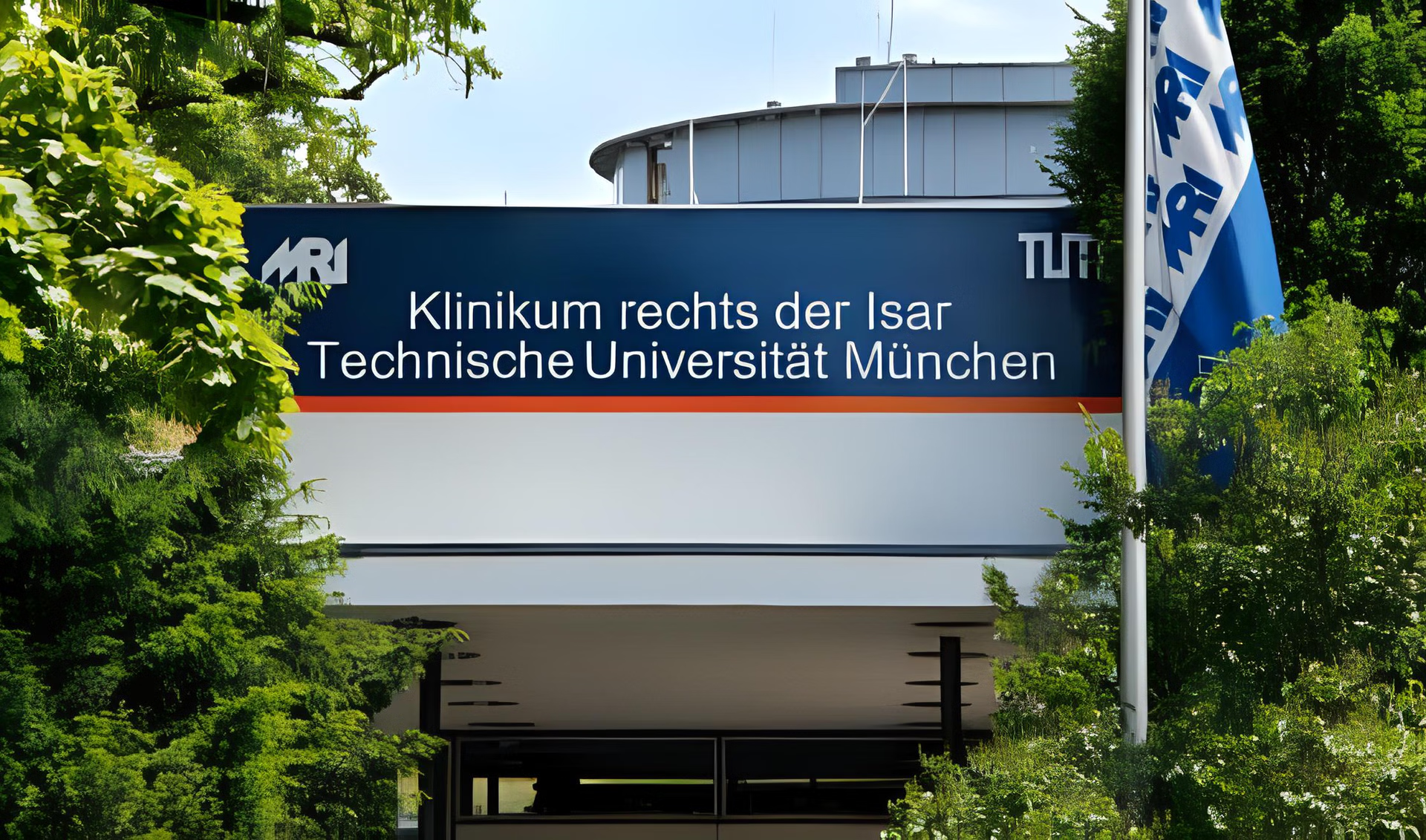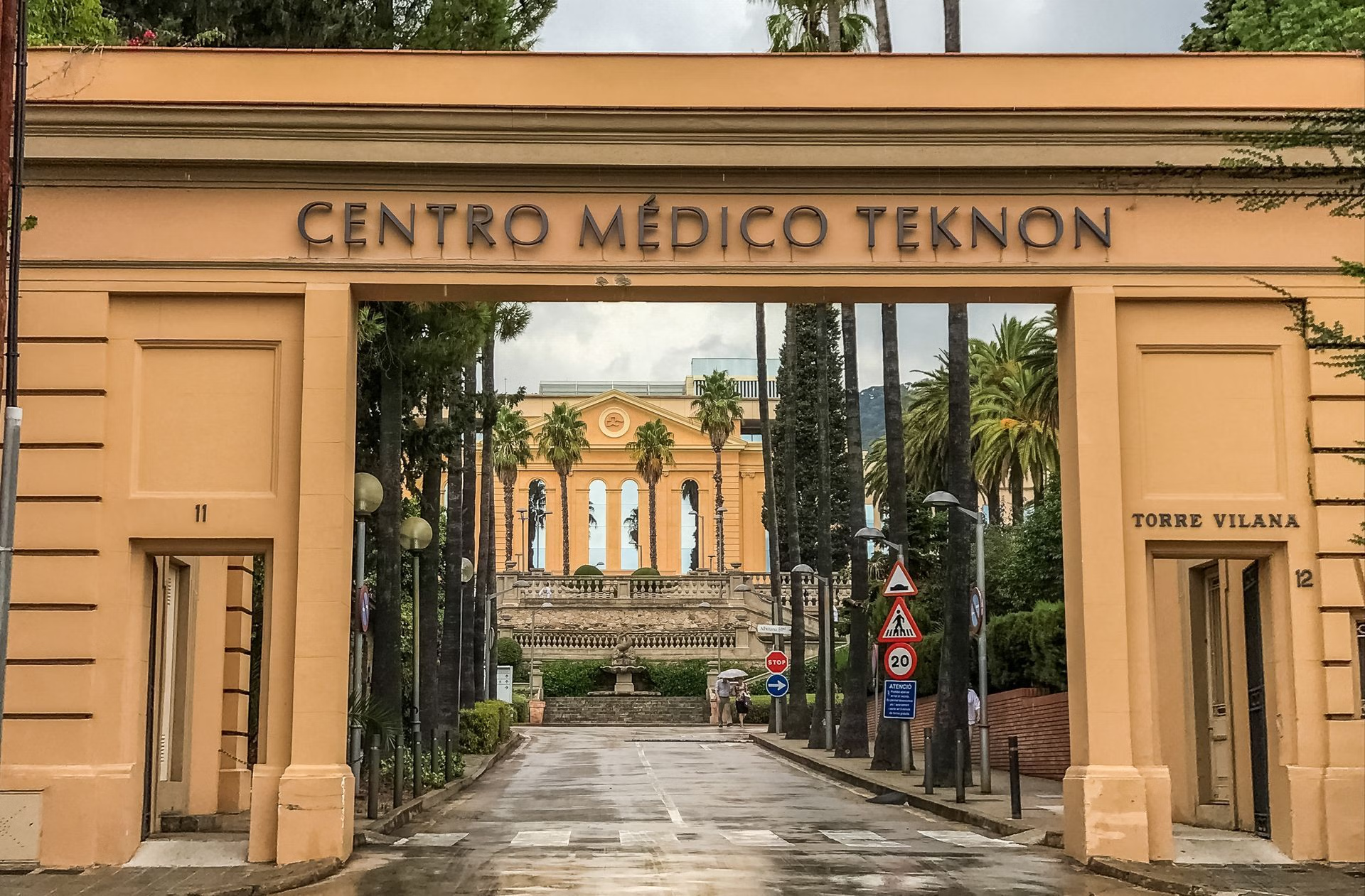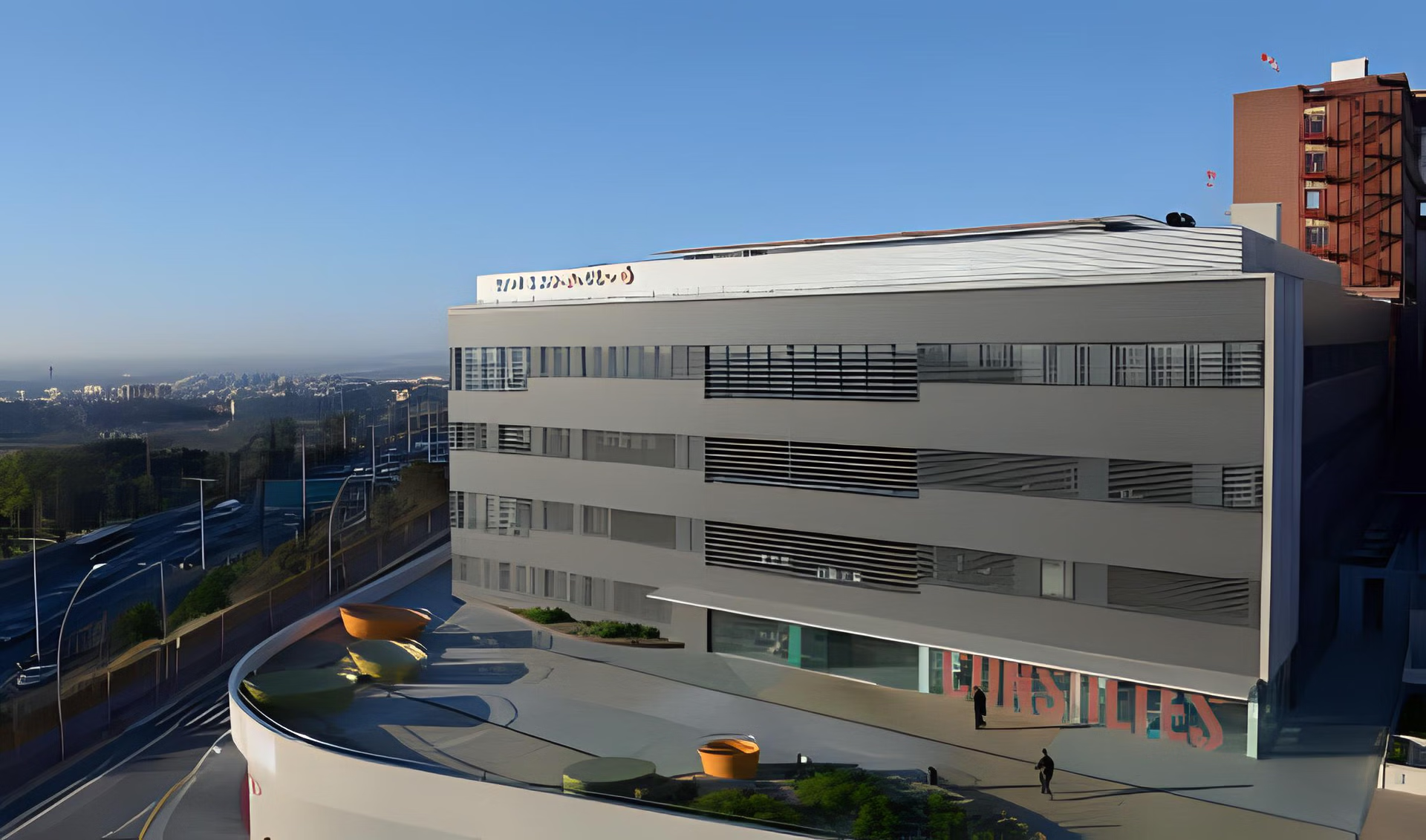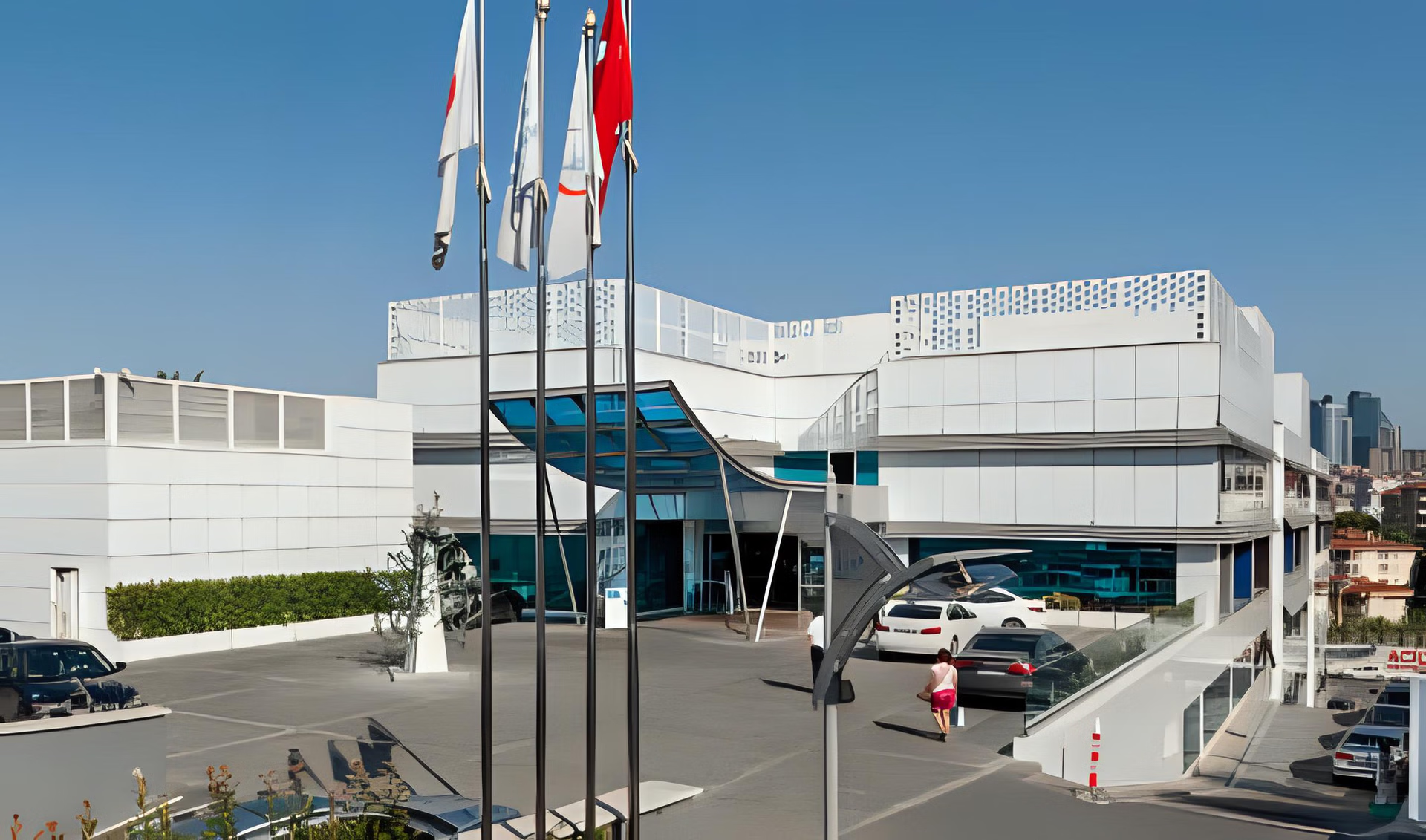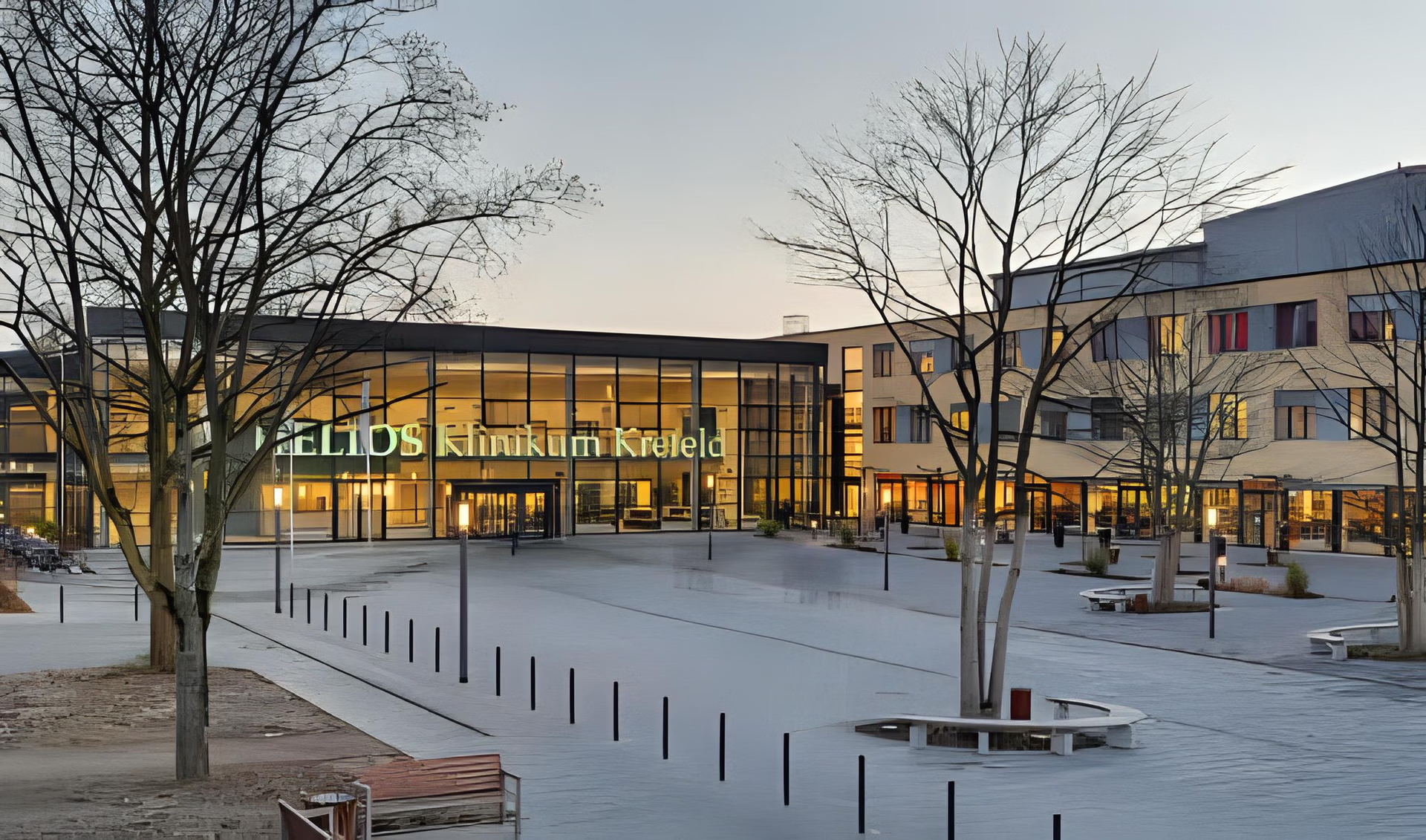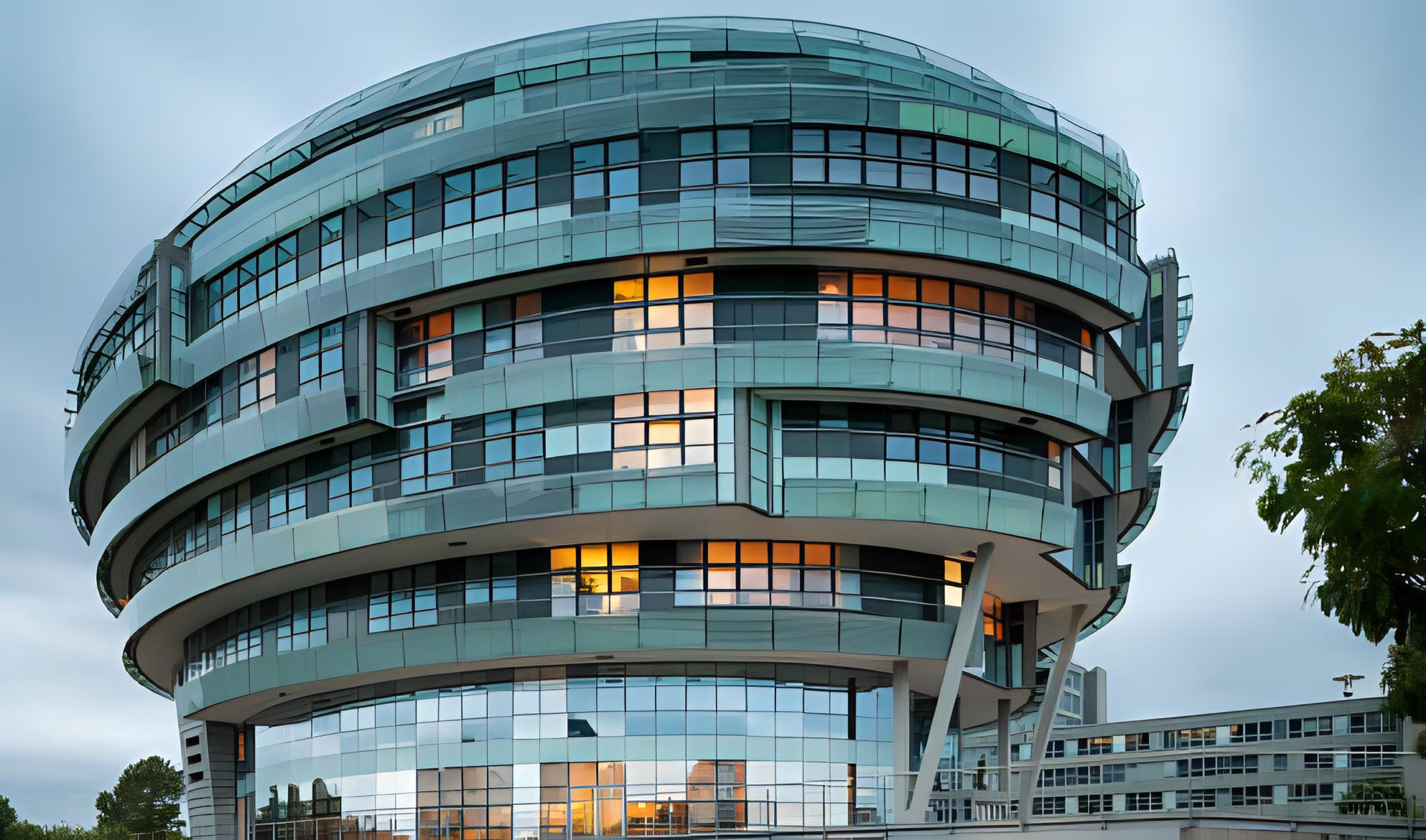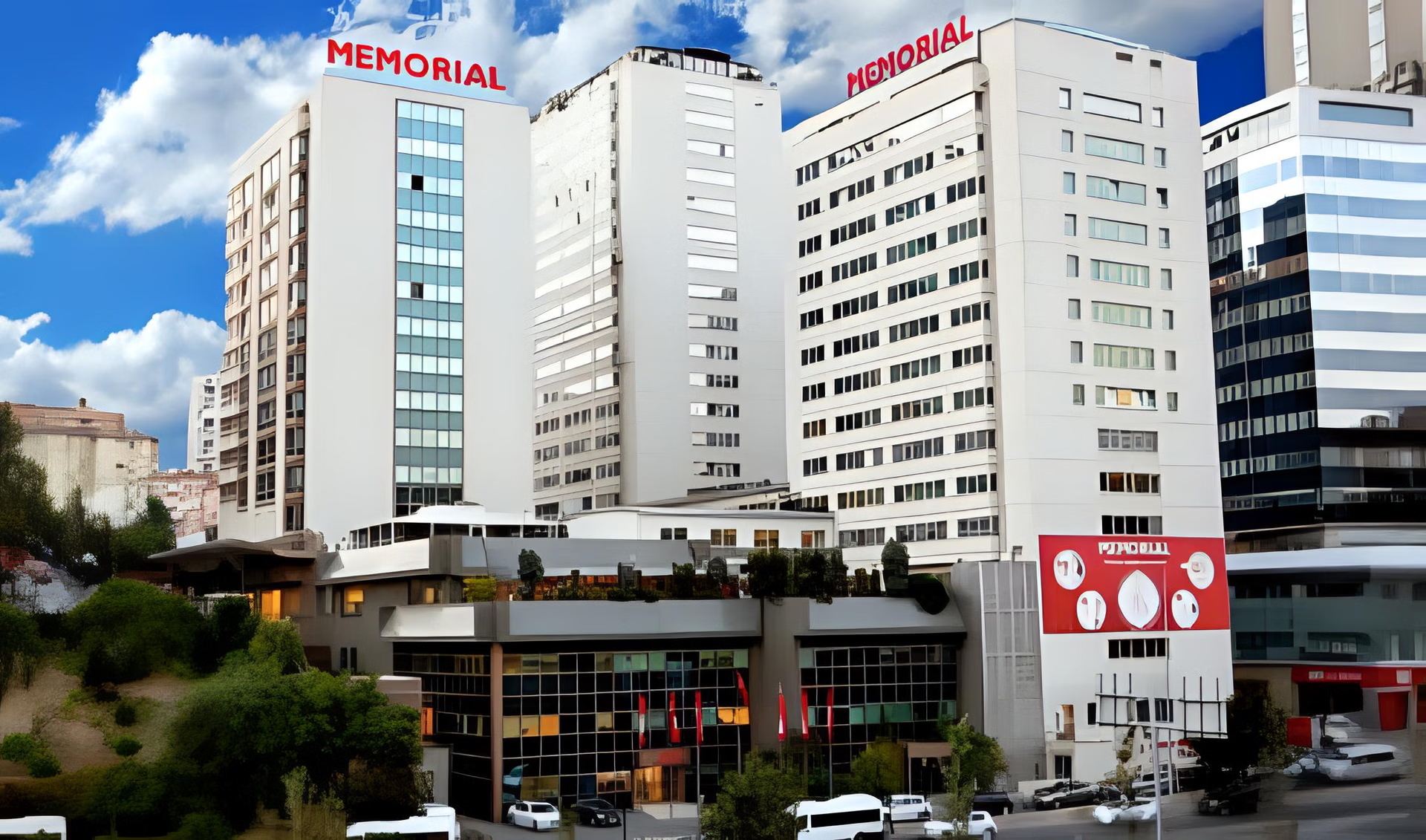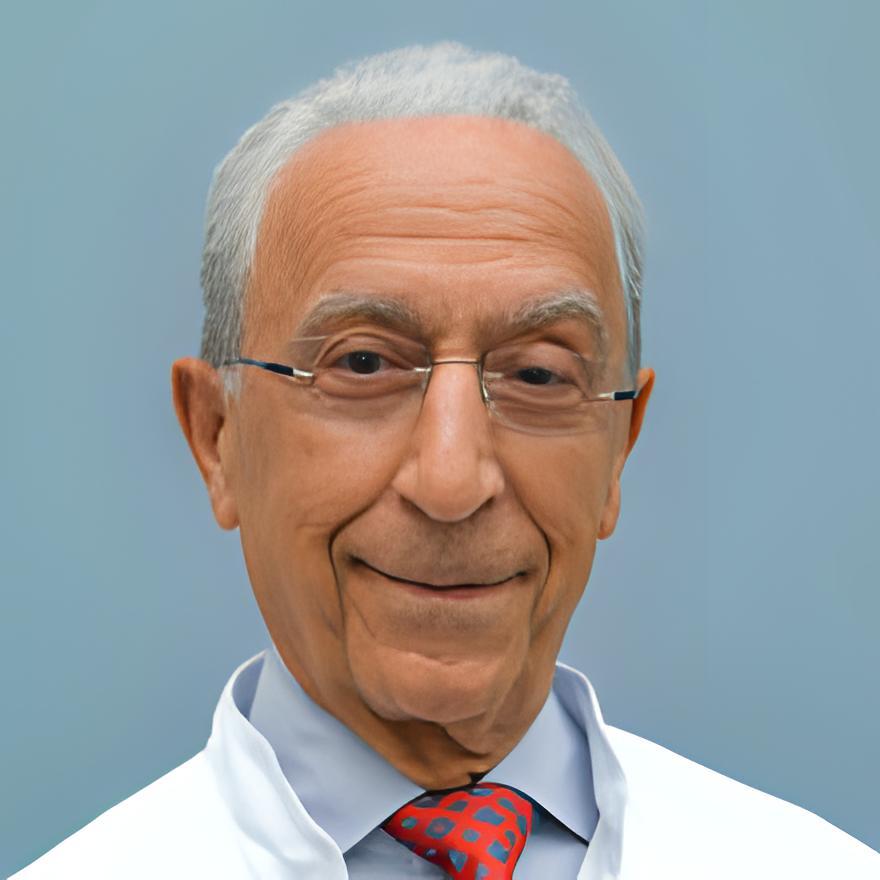Brain Cyst Guide
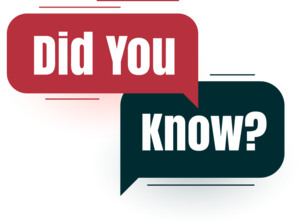
About 1% of all lesions inside the brain are arachnoid cysts. They occur in 3 of every 100 people.
Between 25% and 40% of people have pineal cysts, mostly without symptoms.
Open microsurgery is the most effective treatment for cysts in the head, boasting success rates of 93.3% - 100%.
Brain colloid cysts mortality rates range from 3.1% to 10% in symptomatic cases and 1.2% overall.
 Some words about the brain
Some words about the brain
Understanding the basics of intracranial pressure (ICP) and cerebrospinal fluid (CSF) is crucial for maintaining brain health, especially when dealing with brain cysts.
A simple explanation of how ICP and CSF work together
Intracranial pressure is the pressure inside your skull that affects your brain and the fluid around it. This pressure is essential for your brain to work well and stay healthy. Standard ICP is usually between 5-15 mmHg in adults when lying flat.
Cerebrospinal fluid surrounds and protects your brain and spinal cord. It acts as a cushion, provides nutrients, and removes waste products. CSF is made in particular areas of your brain called ventricles.
The process of CSF formation and flow
- The special structure that produces CSF is the choroid plexus, located in the brain's ventricles.
- Once made, CSF flows through the ventricles and into the spaces around your brain and spinal cord.
- After circulating in these spaces, CSF is absorbed back into your bloodstream through structures called arachnoid granulations.
Brain cysts can impact ICP and CSF flow. If something blocks the flow of CSF, the pressure inside your skull can increase. That's why cysts in the brain cause headaches.
 What is a cyst in the brain?
What is a cyst in the brain?
A cyst in the brain is a fluid-filled sac that forms inside the brain. It is usually non-cancerous and can cause various symptoms or problems depending on size and location. Brain cysts are round growths that happen in the brain. Most of the time, cerebrospinal fluid fills the globe. Some cysts may have blood, pus, hair follicles, or epidermis inside them.
Types of cysts in the brain
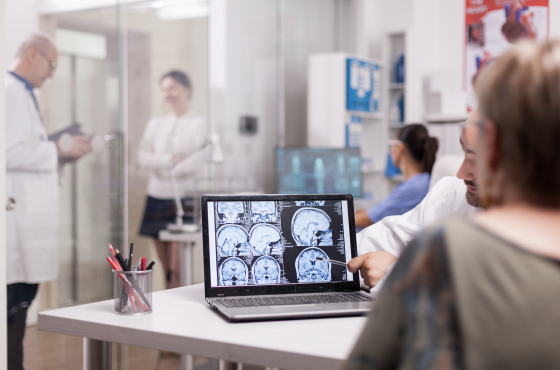 Different brain cysts can form in other places and hold various things. Here are a few examples:
Different brain cysts can form in other places and hold various things. Here are a few examples:
Arachnoid brain cysts
1% of all brain lesions are arachnoid brain cysts filled with fluid. Most of the time, they occur before birth but can also appear after a head trauma or surgical procedure on the brain.
Colloid brain cyst
It is full of a substance like a gel. There are ventricular cysts in the brain. They usually start to form during pregnancy, and if they block fluid flow in the brain, they can cause headaches. They comprise 0.5–2% of all tumors inside the brain and 15–20% of all ventricles tumors.
Dermoid cyst of the brain
It is rare founding (about 0.4-0.6% of all brain lesions). They happen when some skin cells appear in a baby's brain as it grows. This type of cyst on the brain in children can have sweat glands or hair inside.
Epidermoid brain cyst
An epidermoid brain cyst, or epidermoid tumor, is a non-cancerous, slow-growing mass. It develops from skin cells accidentally trapped in the brain during its formation. Typically found as brain cysts in adults, these are filled with soft, flaky substances.
Pineal brain cysts
Pineal cysts in the brain can be found in every third. Mainly, this brain cyst doesn't cause any problems. They form in the middle of the brain, sometimes making it hard to see when they get large.
Hydatid cyst in the brain
Brain hydatid cyst is a rare parasitic infection caused by the specific larval stage of the Echinococcus tapeworm. These cysts can develop in various body organs, but occasionally they can be found in the brain. Another example of parasitic cysts in the brain is caused by the larval stage of the pork tapeworm, known as Taenia solium. When this parasite infects the brain, it can cause neurocysticercosis.
Retention cysts
Retention cysts on the brain are often found by accident in the paranasal sinuses and don't cause any symptoms. They can be seen in up to 13% of CT and MR imaging exams. There are two kinds of retention cysts: serous and mucous.
A tumor causes neoplastic cysts. The answer to whether a brain cyst can be cancerous is yes in the case of a malignant tumor. Metastatic means that a brain tumor started somewhere other than in the brain.
 What causes brain cysts?
What causes brain cysts?
It's important to notify the risk factors for brain cysts to take precautions and monitor any symptoms. Regular screenings and neurological exams can help detect and treat brain cysts early, minimizing complications and improving outcomes.
Risk factors
Brain cysts can be caused by various factors, including:
- Hereditary factors: Some cysts, such as arachnoid and dermoid cysts, can form during fetal development due to genetic factors or abnormalities in the development of the brain and the spinal cord and can be named congenital cysts of the brain.
- Head trauma: Injuries to the head can lead to the formation of cysts, such as post-traumatic pediatric brain cysts (arachnoid), as a response to the damage.
- Tumors: Neoplastic cysts can form from benign or malignant brain tumors. These cysts can be associated with the tumor or develop due to the brain's reaction to cancer.
- Parasites: Certain parasites, such as Echinococcus granulosus or Taenia solium, can cause the appearance of cysts in the brain.
It's important to note that some brain cysts may not have a clear cause and could be idiopathic, meaning how you get a cyst in your brain is unknown.
How to prevent it?
Brain cysts are hard to stop from happening because many things can cause them. But there are some general tips to keep your brain healthy and maybe lower your risk:
- Keep a healthy lifestyle: eat a well-balanced diet, work out regularly, and get enough sleep to keep your brain healthy.
- Avoid head injuries by always wearing protective gear, like helmets, when playing sports or doing other activities where head injuries could happen.
- Manage long-term health problems. Work with your doctor to manage long-term problems like diabetes, high blood pressure, or autoimmune disorders affecting brain health.
- Stick to hygiene habits: Wash your hands often, stay away from sick people, and take care when you travel to places with a high risk of infections that could lead to brain cysts.
- Do regular checkups: See your doctor for regular checkups and tell them about any symptoms that worry you.
These tips can help keep your health in general in good shape, but they can't prevent brain cysts. If you have any neurological symptoms, talk to a doctor for a proper diagnosis and treatment.
 What are the brain cyst symptoms?
What are the brain cyst symptoms?
Most of the time, the symptoms depend on where the cyst develops in the brain. A few brain cysts are "hidden" until they get big enough to be felt. Sometimes, the brain region where the cyst is growing may cause problems.
In other cases, symptoms may be caused by a blockage in the normal flow of cerebrospinal fluid, which raises the pressure in the brain (intracranial pressure).
Signs of brain cyst
Due to American Brain Tumor Association, symptoms can be different for brain cysts size and location:
- Headaches, seizures, changes in vision and hearing, nausea and vomiting, dizziness, hydrocephalus, focal symptoms, and cranial nerve symptoms are all common symptoms of arachnoid cysts. Suppose they are located in the area that controls vital functions like breathing, heart rate, and blood pressure (like the brain stem cysts). In that case, they can cause life-threatening complications such as hydrocephalus or brainstem compression.
- People with dermoid brain cysts mostly have headaches and seizures.
- Colloid cysts can cause increased intracranial pressure or hydrocephalus, which can cause headaches, nausea, changes in vision, brain fog, vertigo, and vomiting.
- Epidermoid brain cysts can cause headaches, loss of hearing, ear ringing, twitching of the face, or pain in the face (trigeminal neuralgia).
- Pineal cysts can lead to headaches, hydrocephalus, seizures, vertigo, changes in vision, and one-sided paralysis.
Most of the time, cystic formations in the brain are found accidentally when someone is checked for something else.
 Diagnostic tests for a cyst in the brain
Diagnostic tests for a cyst in the brain
Concerning how to find cysts in the brain, the evaluations start with other exams from neurologists or neurosurgeons, with a history and a look at the person's body. The neurologist may also want to know about the family history.
Step-by-step diagnosis process
A doctor uses imaging tests to look at the brain to identify the brain lesion. MRI, CT, and angiography images use a contrast dye to show more detail. The images studies are:
- Magnetic Resonance Imaging (MRI) is the most widely used diagnostic test for brain cysts. A strong magnetic field and radio waves create detailed brain images. MRI is beneficial for identifying the size and location of the cyst, as well as any surrounding tissue abnormalities like benign brain cysts.
- Computed Tomography (CT) scan uses X-rays to produce high-resolution brain images. CT scans are less sensitive than MRIs in detecting brain cysts but are faster and more widely available.
- Ultrasound uses high-frequency sound waves to create images of the brain. A non-invasive and safe diagnostic test can detect brain cysts in minutes.
- Angiography involves injecting a contrast dye into the bloodstream and taking X-rays to create images of the brain's blood vessels. This test can be used to identify brain cysts that are affecting blood flow in the brain.
Biopsy: In some cases, a biopsy may be required to confirm the presence of brain cysts. It involves removing a small tissue sample from the brain and examining it under a microscope.
Brain cyst size chart
Here is a general size chart for brain cysts:
- Small: Less than 1 cm in diameter,
- Medium: Between 1 cm and 3 cm in diameter,
- Large: Greater than 3 cm in diameter.
It is essential to note that the size of a brain cyst does not necessarily correlate with the severity of symptoms or the need for a brain cyst operation. Treatment recommendations will depend on the specific type, the brain cysts' location, the individual's symptoms, and overall health.
Brain tumor vs. cyst
While both can cause neurological symptoms, they are different types of growth with other causes and treatments.
- Brain tumors are masses of abnormal cells that can be cancerous or non-cancerous. They require surgery, radiation, and chemotherapy for treatment.
- Brain cysts are fluid-filled sacs usually benign and often don't require treatment. Still, larger cysts can cause symptoms and may need one of the different types of brain cysts surgery.
Diagnostic tests can determine the cause of the symptoms, which may be a brain tumor or cyst. Treatment options like neurosurgery (brain surgery) to remove a cyst depend on the type and size of the growth, and early detection can improve outcomes.
Second opinion for patients with a cyst in the brain
Getting a second medical opinion for a brain cyst can be a helpful step in ensuring an accurate diagnosis and appropriate treatment plan. It may be beneficial for complex cases or when patients feel unsure or uncomfortable with their current medical care.
A distant consultation with a neurosurgeon may be useful for patients with large cysts or cysts in critical areas of the brain, those who have received conflicting opinions, or those who want to explore alternative treatment options.
The benefits of seeking a second opinion include increased confidence in the diagnosis and treatment plan, greater peace of mind, and the possibility of discovering new treatment options.
Where to go for brain cysts removal?
 Treatment for brain cysts
Treatment for brain cysts
Treatment options for brain cysts depend on several factors, including the cyst's type, size, location, and the individual's overall health and symptoms. While most cysts do not require treatment and can be monitored over time, larger cysts may require immediate treatment to prevent further growth of brain cysts and damage to surrounding tissue.
Conventional surgical approaches
Drainage for brain cyst
Brain cyst surgery aims to remove the fluid and outer layer of the cyst to relieve pain and reduce pressure. Several methods help to achieve this, including open brain cyst drainage surgery, which involves making a larger incision in the skull to access and drain the cyst by using a small needle to puncture the cyst and let the fluid out. This method is easy and quick, but the cyst will likely return.
Brain cyst removal
Open cyst removal surgery (craniotomy) consists in removing the cyst altogether. The success rate for open procedures is around 70%. The 20-year brain cyst surgery survival rate for particular cysts is over 90%.
Watchful waiting
In addition to surgical methods, watchful waiting may be an option for small brain cysts that are not causing symptoms. Still, the success of any treatment method (or can a brain cyst be removed) will depend on the individual case. Qualified professionals can recommend the best treatment for a cyst in the brain based on specific circumstances.
What clinics are the best for brain cysts surgery?
 New treatment options for a cyst in the brain
New treatment options for a cyst in the brain
Concerning the frequent patients' questions about the better treatment for a cyst on the brain, it all depends on the individual. New treatments and techniques are being created and suggested based on the brain cysts' type, size, and location.
Latest surgical approaches
Endoscopic drainage
Endoscopic brain cyst drainage surgery involves draining the cyst using an endoscope, a thin, flexible tube with a camera. Recovery time is typically shorter than open surgery. Endoscopic brain cyst fenestration only has a success rate is 75%.
Shunt surgery
Shunt (drainage) placement surgery involves placing a tube, called a shunt, into the cyst to drain fluid from the cyst to another part of the body, such as the abdomen. The 1-year success rate is 77%.
Brain cyst fenestration
Microsurgical fenestration is a surgical procedure that creates a small hole in the wall of a brain cyst to drain its fluid, relieving pressure on surrounding brain tissue and reducing symptoms. This method is typically used for larger or more complex brain cysts and requires a longer recovery than endoscopic fenestration. The success rate is up to 92%.
Suppose a symptomatic brain cyst isn't treated. In that case, it can keep causing headaches and other clinical signs and pressure on healthy brain tissue, damaging nerves. Brain cyst rupture is rare, but it can occur. Surgical procedures for brain cysts are safe. Brain cyst removal risks are low.
The type of treatment depends on numerous factors. Treatment options include minimally invasive methods for faster brain cyst surgery recovery time.
Rehabilitation following brain cyst surgery
Rehabilitation after brain cyst surgery can help patients regain strength and function, improve their quality of life, and reduce the risk of complications. Depending on the location and size of the cyst, patients may require physical therapy, occupational therapy, speech therapy, or a combination of these. In most cases, doctors advise having complex neurological rehabilitation.
Physical therapy focuses on improving mobility and strength, while occupational therapy helps patients regain skills needed for daily living. Speech therapy can assist with communication and swallowing difficulties.
The specific type and duration of rehabilitation depend on the individual case. Still, the benefits of rehabilitation can include improved physical function, increased independence, and better overall health outcomes.
Alternative treatment for brain cyst
Alternative treatments for brain cysts, such as acupuncture, herbal remedies, and dietary changes, are not well-studied and have limited scientific evidence to support their effectiveness.
While some people may consider these treatments in addition to traditional medical treatments of brain cysts, it is essential to approach them cautiously and consult a professional before attempting alternative therapies. It is also important to remember that these treatments may only suit some.
Best neurosurgeons for a cyst on the brain
 Brain cyst in numbers: stats and predictions
Brain cyst in numbers: stats and predictions
Most brain cysts are harmless and don't need to be taken out surgically. However, if surgery is required for certain signs, the neurosurgeon will choose and offer the best option.
Statistics on the chart
The National Institutes of Health (NIH) labs do much research on brain disorders and problems with the nervous system. In particular, research is being done on what causes arachnoid cysts and how they affect people, including children.
Facts have shown that about 1% of kids who get a blow to the head get arachnoid brain cysts. 35% of people with a cyst show signs of a change in their mental state, such as drowsiness, slow responses, and asking the same questions repeatedly. 50% of people with brain cysts have headaches, 24% report vomiting, and 37% have lost consciousness in the past.
What is the brain cyst survival rate?
The survival rate for brain cysts depends on many factors, such as type, size, and location of the cyst, overall health, and the individual's age. While most brain cysts are benign and do not affect life expectancy, larger cysts or cysts in critical areas of the brain can cause neurological symptoms and require medical attention. The success of the treatment and long-term outcome depends on the type of brain cysts and individual cases.
Brain cyst death rate is the highest in the case of symptomatic colloid cysts of the third ventricle that can get worse quickly and cause death in up to 12% of cases.
Many brain cysts are present at birth, but sometimes they can be signs of something more serious, like cancer or an infection. But most people with cysts will be fine after surgery to remove them altogether. And AiroMedical experts will help you choose the most proper ways to treat your condition.
References:
- Hoang, J. K., Smith, E. C., & Barboriak, D. P. (2009). Ruptured Maxillary Retention Cyst: Cause of Unilateral Rhinorrhea after Trauma. AJNR Am J Neuroradiol, 30(6), 1121-1122. doi: 10.3174/ajnr.A1457. PMID: 19439483. PMCID: PMC7051332.
- Omay, S.B., Baehring, J.M. (2016). Nonneoplastic Mass Lesions of the Central Nervous System. In Handbook of Neuro-Oncology Neuroimaging (Second Edition). doi: 10.1016/B978-0-12-800945-1.00005-
- Lee, E-J., & Ra, Y-S. (2012). Clinical and Neuroimaging Outcomes of Surgically Treated Intracranial Cysts in 110 Children. J Korean Neurosurg Soc, 52(4), 325-333. doi: 10.3340/jkns.2012.52.4.325. PMID: 23133720. PMCID: PMC3488640.
- P, B.K., Shrivastava, A., Goel, G., et al. (2021). A Rare, yet Classic Case of Colloid Cyst of Third Ventricle. Cureus, 13(7), e16406. doi: 10.7759/cureus.16406.
- Qin, B., Gao, L., Hu, J., Wang, L., & Chen, G. (2018). Intracerebral hematoma after endoscopic fenestration of an arachnoid cyst: A case report. Medicine, 97(44), e13106. doi: 10.1097/MD.0000000000013106.
- Hosainey, S.A.M., Lykkedrang, B.L., & Meling, T.R. (2022). Long-term risk of shunt failure after brain tumor surgery. Neurosurgical Review, 45, 1589-1600. doi: 10.1007/s10143-021-01554-3.
- Mustansir, F., Bashir, S., & Darbar, A. (2018). Management of Arachnoid Cysts: A Comprehensive Review. Cureus, 10(4), e2458. doi: 10.7759/cureus.2458. PMID: 29888162. PMCID: PMC5991924.
